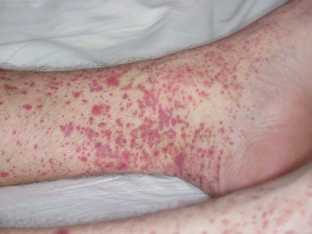Periarteritis nodosa or polyarteritis – this is one of the forms of necrotizing vasculitis, covering arteries of medium diameter, and also affecting inflammation and limiting the blood supply to soft tissues and internal organs of a person. This disease was first described in the 19th century.
The average incidence of periarteritis nodosa is 0.7 cases (ratio 0.2-1.0) per 100,000 people. In this case, the kidneys are affected in 64-80% of cases.
Read more about the causes, conditions, mechanism of action and clinical symptoms of periarteritis nodosa at estet-portal.com.
Who is commonly affected by periarteritis nodosa?
The first description of this disease was made by A. Kussmaul and R. Mayer in 1866. In some sources, periarteritis nodosa occurs with the appropriate name - Kussmaul-Mayer disease. They identified and described it in a 27-year-old man as a systemic ailment, accompanied by fever, abdominal pain, muscle weakness, polyneuropathy, and impaired renal function. The incidence of this disease in men is three to five times higher than in women. The age range of patients with periarteritis nodosa is in the range of 30-50 years, although sometimes it is noted in the younger and older age categories.
As for the causes and conditions for the occurrence of this type of polyarteritis, they have not yet been established. However, studies have identified a link between periarteritis nodosa and certain viral infections. Therefore, the presence of viral infections, including chronic ones, increases the risk of developing periarteritis nodosa.

What are the symptoms periarteritis nodosa?
Periarteritis nodosa may be accompanied by the development of arterial necrotizing vasculitis of medium and small scale. Often all three vascular walls are involved in this process, which leads to the appearance of aneurysms. But initially the disease manifests itself gradually. Only drug-derived periarteritis nodosa can start with an acute attack.
General non-specific signs may persist for several weeks. Initially, they are manifested by symptoms of articular syndrome, weight loss or fever, then they may be accompanied by signs of visceral lesions.
Subsequent symptoms of nodular periarteritis may include:
- signs of articular syndrome already described;
- skin lesion, manifested by the appearance of small nodes located along the vessels;
- abdominal syndrome (in 36-44%), accompanied by pain in the abdomen, indigestion, or even signs of gastrointestinal bleeding;
- disturbances in the functioning of the peripheral nervous system with manifestations of asymmetric polyneuritis;
- heart damage in the form of coronaritis;
- rare – disruption of the lungs, endocrine system, or inflammation of the eyes.
What are the causes of periarteritis nodosa?
As mentioned above, this disease is often associated with some viral infections. The hepatitis B virus (HBV) is number one among them. The frequency of the disease in different countries has a different percentage. So, in France and the USA, thanks to vaccination, this percentage is quite low.
Speaking about how periarteritis nodosa and hepatitis B correlate, we can cite the data collected by E. Semenkova. Based on these, more than 75% of patients with polyarteritis were found to have hepatitis B markers. However, among those already infected with HBV, periarteritis was observed in almost 3% of cases.
In addition to hepatitis B, other infections such as hepatitis C, herpes, cytomegalovirus and HIV were also discussed. Moving on to the flow mechanism nodular periarteritis, it is worth noting that it is immunocomplex in nature. Immune complexes are deposited in the walls of blood vessels, which cause disruption and pathology of the structure of the arterial walls.
Thus, if there is a suspicion of the development of periarteritis nodosa, a comprehensive examination of the patient is recommended and, in addition to the treatment of polyarteritis, antiviral therapy is necessary.







Add a comment